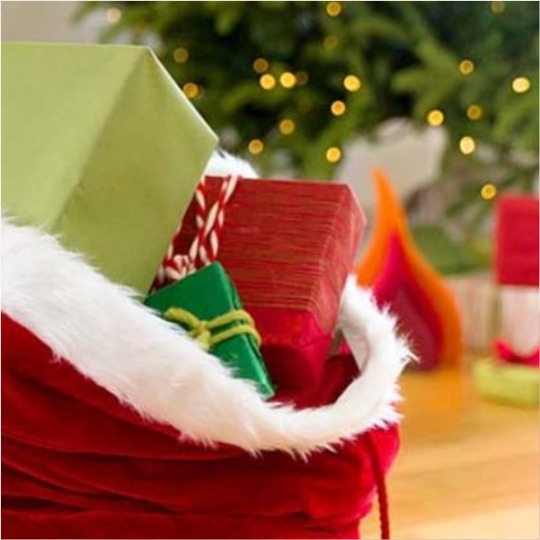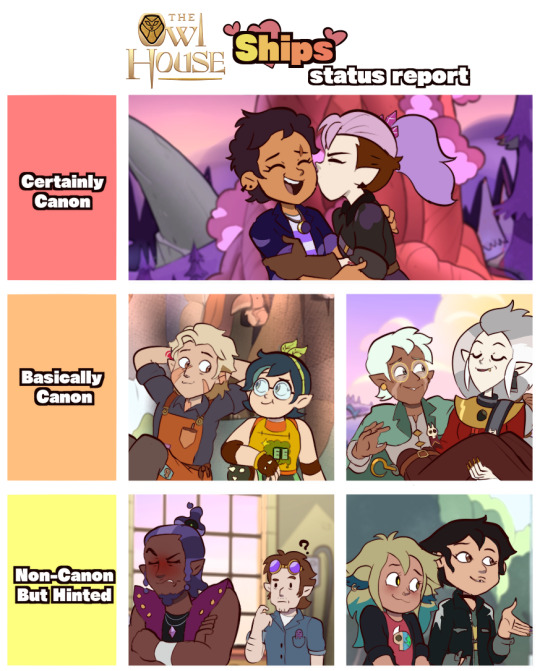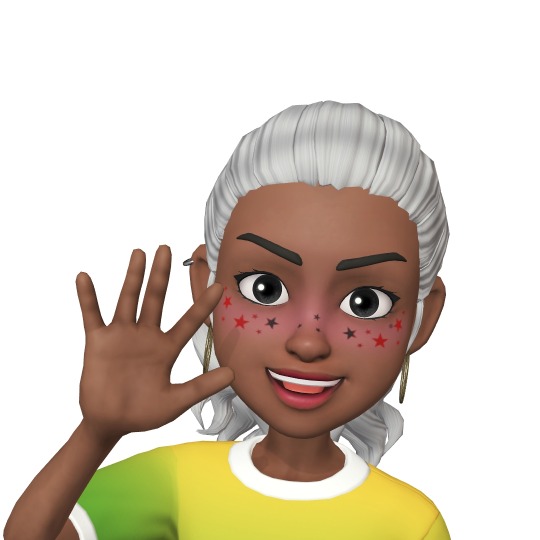#skara aesthetics
Explore tagged Tumblr posts
Text

I changed her look to locs.



#Skara#skara avatars#ar studio#skara aesthetics#skara fanart#Nesha Made Avatars#fan art#tv characters#black female cartoon characters#black female characters#skara has a prosthetic leg agenda in this house#prosthetic leg#Disability Pride Month#The Owl House#toh fanart#white hair#cartoon witch#black witch#Skara TOH
16 notes
·
View notes
Text
After Skara punched Steve, I'd say homie would be IN the fight or JUMP in the fight too. Sis will swing on you. Canonically.

6K notes
·
View notes
Text









~ books read in 2023 ~
#38: Juniper's Christmas by Eoin Colfer
I'm sure you know Santa's story. Everyone knows it, but since it's one of the greatest tragedies of all time I shall summarize here before we move on to the story of a girl from London who would track down Santa Claus when he hid himself away from the world.
Rating: 5/5
#juniper's christmas#eoin colfer#2023 reading list#books#book aesthetic#book moodboard#middle grade books#fiction#christmas#family#santa claus#magic#a reindeer named skara
2 notes
·
View notes
Text
Pokemon Typings of competitors of the tournament
Silly post I felt like doing this because yes I got inspired from analysing Boscha and Willow's battle so here you go:
Willow Park - Grass/Fighting - (obviously Willow is the most powerful plant witch in this tournament along with having gains and fighting using brute force and the strength of her heart)
Hunter Deamonne - Fighting/Psychic - (since Hunter is a trained fighter, the fighting type is a choice by default. I picked psychic type as a secondary so it could tie all of his more magical abilities together neatly as his power of levitation, telekinesis, and even teleportation and creation can be very much related to psychic types in my book)
Luz Noceda - Normal/Dragon - (Luz is a human so on her own she's normal but I give her dragon as a second typing due to her wielding String Bean which resembles Dratini, the first and original dragon-type Pokemon introduced a lot and Luz has connection to the titans' magic that can conquer elements and has overall a lot of raw power that Luz cultivated over time)
Amity Blight - Ground/Ghost - (the way Amity uses her magic suggests she uses mud most of the time rather than either using poison and while her technique is similar to waterbending, her goo does not act like water by itself so I delved more into ghost-typing to a) reference her palismen b) reference how original waterbenders drive their strength and learned how to bend from the moon spirit and c) to connect Amity's personality and aesthetic)
Gus Porter - Psychic/Ghost - (being an illusion master means he of course would be a psychic type, along with him lowkey having telepathy and memory projection abilities, but him also using nightmare fuel while wielding his magic and his illusions also more than often being intangible, I gave Gus ghost as a secondary type, which is especially true for Gus's clones)
Viney - Fairy - (her ability to heal and tame wild animals along with her desire to protect them screams fairy type to me. I was considering giving her secondary typing, but considering Granbull and Snubull are pure fairy types while looking fierce, I decided Viney would just be a singular fairy type)
Boscha - Fire/Poison - (Boscha overall has a lot of fire moves along with being in potion track and even as a person Boscha is both fierce and toxic, so this typing is perfect for her)
Bria - Rock/Fighting - (Rocks are Bria's primary weapon and she also wields a sword and priorities physical strength so I also gave her a fighting type for good measure)
Emira Blight - Psychic/Fairy - (psychic type for her illusion casting and her level-headedness, fairy type for both her healing, compassion, and mischievousness along with her charm)
Edric Blight - Psychic/Fire - (psychic type for his illusions and intelligence (even if he can be an airhead at times, the boy's still clever) and fire type for his chaotic nature while wielding a bunch of explosives)
Matt Tholomule - Rock/Dark - (rock type for construction type and dark type that stands for how shady Matt can be at times along with his illusions that are used for deception. I didn't give either Blight Twins or Gus dark-type for their illusions as they're hardly mean-spirited in general so an "Evil" type wouldn't fit them)
Skara - Normal/Electric ( her sound attacks are hardly anything extraordinary. Electric stands for her thunderstorm and whether or not some of her sound-based abilities have the power of electricity within them)
Gavin Deamonne - Ground (Gavin uses very straight-forward abomination magic and his abominations seem to act like they're made out of clay which is even closer to earth)
Barcus - Psychic/Ghost (I committed any poison-typing for Carcus as hardly he uses liquids in his spells and his powers are so mind and spirit-like focused, I might as well give Barcus the same typing Gus has)
Jerbo - Ground/Grass (Jerbo's animations are clearly made out of the soil and he still utilises plant magic)
Angmar - Grass/Bug (Anfmar's primary magic is the plant one, but he also affinity for befriending bugs, specifically butterflies)
If you want to add anything or discuss this let me know
#would it count as a shitpost?#it certainly is low-effort post on my part#it's just silly#the owl house#toh#character profiles#also not me giving my predicitions on who wins this tournament lol#it's not a spoiler if it's not decided yet
5 notes
·
View notes
Text
bi4pan Huntlow confirmed brainworms incoming, not like I haven’t thought about this previously haha
Hunter having a crush on someone in the human realm is cute for the possibility of Luz helping him through it as bi found family, but consider the thematic appropriateness of puppy love for Steve as his mlm awakening— first off, in the bisexual spirit of “I love all women and Inu Yasha,” (which I believe is something Hunter would endorse, mostly for the dog boy and not necessarily for his actual preference in men), Steve is underlyingly gentle. Hunter has to admire how Steve is able to assert his sense of self (via his name) despite the literally faceless conditions of the Emperor’s Coven. That would also make ASiaS more fun as Hunter gets to experience not only beraying Darius (and Belos by proxy) but the multiple affections warming in his chest by the end of the episode.
Willow’s early sapphic crushes consist of almost every girl she knows, but she would never have acted on them because of low self-esteem and her preference for conflict avoidance. She gets them and doesn’t let herself feel them, even as it’s obvious (a là s2 finale into TTT-era Huntlow, she’s unwittin’-ly smitten.) In no order: Skara (aesthetic crush when she first gets her undercut, but it goes away when she gets mean), Viney (tell me the FTF wrist hold doesn’t have a past), of course Amity (pre-her turn to being a bully), Emira (cool older sister rizz, I mean it worked on Luz), Luz (first girl to give a shit about her in ages? absolutely), heck even Bo (freckles, cute nose.) Literally anyone but Boscha, like, her female teachers? Sure.
6 notes
·
View notes
Text
I honestly have no opinions about the Skara and Viney ship, just like I have no opinions on the Viney and Emira ship.
They’re a ship based on zero one-on-one interactions and I guess aesthetic. Ship it if you want, but I won’t stop you.


34K notes
·
View notes
Text
Transform Your Space, Quick and Easy Home Improvement Ideas
Interior design is the art and science of enhancing the interior of a building to create a healthier and more aesthetically pleasing environment for those who use the space. An interior designer is someone who plans, researches, coordinates and directs such improvement projects. An interior designer is a multifaceted profession that includes concept development, space planning, site visits, scheduling, research, communication with project stakeholders, construction management, etc., and project execution.
Past and Present
Typical interior of one of the houses in the Vlkolíniec Folk Architecture Park (Slovakia)
In the past, interiors were designed instinctively as part of the building process.[1]
The interior design profession is a consequence of societal evolution and the complex architecture resulting from the development of industrial processes.
The pursuit of efficient use of space, user well-being and functional design has contributed to the development of the modern interior design profession. The interior design profession is separate and distinct from the role of interior decorator, a term commonly used in the United States. The term is less common in the UK, where the interior design profession is not yet regulated and is therefore not, strictly speaking, an official profession.
In ancient India, architects were also interior designers. This can be deduced from the mention of the architect Vishwakarma, one of the gods of Indian mythology. In these 17th-century Indian architects and house designs, carvings depicting ancient texts and events can be seen in the palaces, while in medieval times wall paintings were a common feature of palatial dwellings in India, commonly referred to as havelis. Although most of the traditional houses have been demolished to make way for
modern buildings, there are still around 2,000 villas in the Shekhawati region of Rajasthan[2] where the murals can be seen.
In ancient Egypt, "soul houses" (or model houses) were placed in tombs as receptacles for food offerings.From this, details of the interior layout of various residences of different Egyptian dynasties can be discerned, such as changes in ventilation, porches, columns, loggias, windows and doors.
Reconstructed Roman triclinium or dining room with three clinai or sofas.
Interior wall paintings have existed for at least 5,000 years, with examples as early as the Ness of Brodgar[4], as well as stenciled interiors such as the Rules of Skara Brae show this.[5] It's the Greeks, then the Romans in the first millennium BC. They added matching decorative mosaic floors and stenciled baths, shops, civil offices, castra (fortress) and temples, and interiors. With specialized companies for the manufacture of interior decorations and furniture according to the
formula in buildings built according to the forms defined by Roman architects such as Vitruvius: De architectura, libri decem (The Ten Books of Architecture).
Throughout the 17th and 18th centuries and into the early 19th century, interior decoration was done by a housewife, an upholsterer or a hired craftsman who advised on the artistic style of the interior decoration. Architects also employed craftsmen to decorate the interiors of their buildings.
In the mid to late 19th century, interior design services grew significantly as the middle class in developed countries grew in power and wealth and began coveting national tokens of wealth to cement their new status. Large furniture companies have started to deal with general interior design and management, offering complete interior items in different styles. This business model evolved from mid-century to 1914, when the role was increasingly filled by independent, often amateur, designers.This paved the way for the emergence of professional interior design in the mid-20th century.[9]
Illustrated Catalog of the James Shoolbred Company published 1876.
upholsterers began to expand their business in the 1950s and 1960s. They treat their business broader and in artistic categories and start promoting their furniture. To meet the growing demand for custom interior work on projects such as offices, hotels and public buildings, these companies have become much larger and more complex, employing builders, carpenters, plasterers, textile designers,
artists and furniture designers, and engineers. and technicians to get the
to do the job.Businesses began publishing and distributing printed catalogs in various lavish styles to appeal to the burgeoning middle class.
As department stores increased in number and size, storefronts were decorated in different styles to serve as a model for customers. A particularly effective advertising tool was the setting up of showrooms in the showrooms of national and international exhibitions open to the public. Pioneer companies in this field include Waring & Gillow, James Shoolbred, Mintons & Holland & Son. These traditional, high-quality furniture companies began to play an important role as advisors in conveying taste and style to middle-class customers, and began designing and Home Improvement furnishing many of Britain's notable buildings.[10]
such companies emerged after the Civil War in America. Founded by two exiled German brothers, Gebrüder Herter began as a warehouse for upholstery fabrics and grew into one of the earliest furniture manufacturers and interior designers. With their own design office, joinery and upholstery workshops, the Herter brothers were ready to undertake all aspects of interior decoration, including decorative woodwork and fireplaces, wall and ceiling decorations, patterns, and carpets and curtains.
1 note
·
View note
Text
Transform Your Space, Quick and Easy Home Improvement Ideas
Interior design is the art and science of enhancing the interior of a building to create a healthier and more aesthetically pleasing environment for those who use the space. An interior designer is someone who plans, researches, coordinates and directs such improvement projects. An interior designer is a multifaceted profession that includes concept development, space planning, site visits, scheduling, research, communication with project stakeholders, construction management, etc., and project execution.
Past and Present
Typical interior of one of the houses in the Vlkolíniec Folk Architecture Park (Slovakia)
In the past, interiors were designed instinctively as part of the building process.[1]
The interior design profession is a consequence of societal evolution and the complex architecture resulting from the development of industrial processes.
The pursuit of efficient use of space, user well-being and functional design has contributed to the development of the modern interior design profession. The interior design profession is separate and distinct from the role of interior decorator, a term commonly used in the United States. The term is less common in the UK, where the interior design profession is not yet regulated and is therefore not, strictly speaking, an official profession.
In ancient India, architects were also interior designers. This can be deduced from the mention of the architect Vishwakarma, one of the gods of Indian mythology. In these 17th-century Indian architects and house designs, carvings depicting ancient texts and events can be seen in the palaces, while in medieval times wall paintings were a common feature of palatial dwellings in India, commonly referred to as havelis. Although most of the traditional houses have been demolished to make way for
modern buildings, there are still around 2,000 villas in the Shekhawati region of Rajasthan[2] where the murals can be seen.
In ancient Egypt, "soul houses" (or model houses) were placed in tombs as receptacles for food offerings.From this, details of the interior layout of various residences of different Egyptian dynasties can be discerned, such as changes in ventilation, porches, columns, loggias, windows and doors.
Reconstructed Roman triclinium or dining room with three clinai or sofas.
Interior wall paintings have existed for at least 5,000 years, with examples as early as the Ness of Brodgar[4], as well as stenciled interiors such as the Rules of Skara Brae show this.[5] It's the Greeks, then the Romans in the first millennium BC. They added matching decorative mosaic floors and stenciled baths, shops, civil offices, castra (fortress) and temples, and interiors. With specialized companies for the manufacture of interior decorations and furniture according to the
formula in buildings built according to the forms defined by Roman architects such as Vitruvius: De architectura, libri decem (The Ten Books of Architecture).
Throughout the 17th and 18th centuries and into the early 19th century, interior decoration was done by a housewife, an upholsterer or a hired craftsman who advised on the artistic style of the interior decoration. Architects also employed craftsmen to decorate the interiors of their buildings.
In the mid to late 19th century, interior design services grew significantly as the middle class in developed countries grew in power and wealth and began coveting national tokens of wealth to cement their new status. Large furniture companies have started to deal with general interior design and management, offering complete interior items in different styles. This business model evolved from mid-century to 1914, when the role was increasingly filled by independent, often amateur, designers.This paved the way for the emergence of professional interior design in the mid-20th century.[9]
Illustrated Catalog of the James Shoolbred Company published 1876.
upholsterers began to expand their business in the 1950s and 1960s. They treat their business broader and in artistic categories and start promoting their furniture. To meet the growing demand for custom interior work on projects such as offices, hotels and public buildings, these companies have become much larger and more complex, employing builders, carpenters, plasterers, textile designers
1 note
·
View note
Text
Transform Your Space, Quick and Easy Home Improvement Ideas
Interior design is the art and science of enhancing the interior of a building to create a healthier and more aesthetically pleasing environment for those who use the space. An interior designer is someone who plans, researches, coordinates and directs such improvement projects. An interior designer is a multifaceted profession that includes concept development, space planning, site visits, scheduling, research, communication with project stakeholders, construction management, etc., and project execution.
Past and Present
Typical interior of one of the houses in the Vlkolíniec Folk Architecture Park (Slovakia)
In the past, interiors were designed instinctively as part of the building process.[1]
The interior design profession is a consequence of societal evolution and the complex architecture resulting from the development of industrial processes.
The pursuit of efficient use of space, user well-being and functional design has contributed to the development of the modern interior design profession. The interior design profession is separate and distinct from the role of interior decorator, a term commonly used in the United States. The term is less common in the UK, where the interior design profession is not yet regulated and is therefore not, strictly speaking, an official profession.
In ancient India, architects were also interior designers. This can be deduced from the mention of the architect Vishwakarma, one of the gods of Indian mythology. In these 17th-century Indian architects and house designs, carvings depicting ancient texts and events can be seen in the palaces, while in medieval times wall paintings were a common feature of palatial dwellings in India, commonly referred to as havelis. Although most of the traditional houses have been demolished to make way for
modern buildings, there are still around 2,000 villas in the Shekhawati region of Rajasthan[2] where the murals can be seen.
In ancient Egypt, "soul houses" (or model houses) were placed in tombs as receptacles for food offerings.From this, details of the interior layout of various residences of different Egyptian dynasties can be discerned, such as changes in ventilation, porches, columns, loggias, windows and doors.
Reconstructed Roman triclinium or dining room with three clinai or sofas.
Interior wall paintings have existed for at least 5,000 years, with examples as early as the Ness of Brodgar[4], as well as stenciled interiors such as the Rules of Skara Brae show this.[5] It's the Greeks, then the Romans in the first millennium BC. They added matching decorative mosaic floors and stenciled baths, shops, civil offices, castra (fortress) and temples, and interiors. With specialized companies for the manufacture of interior decorations and furniture according to the
formula in buildings built according to the forms defined by Roman architects such as Vitruvius: De architectura, libri decem (The Ten Books of Architecture).
Throughout the 17th and 18th centuries and into the early 19th century, interior decoration was done by a housewife, an upholsterer or a hired craftsman who advised on the artistic style of the interior decoration. Architects also employed craftsmen to decorate the interiors of their buildings.
In the mid to late 19th century, interior design services grew significantly as the middle class in developed countries grew in power and wealth and began coveting national tokens of wealth to cement their new status. Large furniture companies have started to deal with general interior design and management, offering complete interior items in different styles. This business model evolved from mid-century to 1914, when the role was increasingly filled by independent, often amateur, designers.This paved the way for the emergence of professional interior design in the mid-20th century.[9]
Illustrated Catalog of the James Shoolbred Company published 1876.
upholsterers began to expand their business in the 1950s and 1960s. They treat their business broader and in artistic categories and start promoting their furniture. To meet the growing demand for custom interior work on projects such as offices, hotels and public buildings, these companies have become much larger and more complex, employing builders, carpenters, plasterers, textile designers,
1 note
·
View note
Text
I put a Skara avatar in my AR Studio, keeping with the design/hc she has a prosthetic leg.






#Skara#avatars#skara avatars#skara aesthetics#The Owl House#prosthetics#black female cartoon characters#cartoon fanart#skara fanart#Nesha Fanart#Nesha Does Things#AR Emoji Studio#black witch#cartoon witch#white hair#prosthetic leg#This is a Skara Appreciation Blog
15 notes
·
View notes
Text
⠀ ☆ Toh layout!





⠀ ⠀ ⠀!? ^__^ 💤





♡ Repost or like if you save ( 。>﹏<。)
⠀ 𓄹⠀🫐 ⋆ ،، ★ ....
#toh layouts#icons#aesthetic#messy layouts#the owl house#casa da coruja#the owl house layouts#toh s2#toh viney#toh boscha#toh skara#toh matt#messy headers#layouts#messy icons#messy packs
413 notes
·
View notes
Text

Skarlow moodboard 🐝💖🦗
#toh#the owl house#skarlow#skara#skara toh#toh skara#Willow park#toh Willow#look I’m 100% aroace Willow bc my Willow was but this ship is so cute#toh moodboard#toh aesthetic#the owl house moodboard#the owl house aesthetic#Willow park moodboard#skarlow moodboard#skara moodboard#Willow park aesthetic#skara aesthetic#moodboard#my moodboards#bugs
29 notes
·
View notes
Text

I just finished the season 3 episode and decided that I had to make a Hunter mood board, please credit me if you repost. The photos show him evolving across the 3 seasons.
<<<< Amity's first mood board <<<< Amity's second mood board
#the owl house#aesthetic moodboard#toh hunter#toh willow#toh gus#toh skara#toh flapjack#golden guard#toh golden guard#toh season two#toh season three#tohspoilers
9 notes
·
View notes
Text










🎻 SKARA ; AESTHETIC
— with lesbian and vintage music themes + hints to Boscha ; gift for @witchsduel from @sashanne
20 notes
·
View notes
Text

Skara. ❤️
#starlightart#the owl house#skara#toh skara#the owl house fanart#the owl house skara#toh fanart#toh#skara fanart#heart aesthetic#skara the owl house
21 notes
·
View notes
Text



Girlflux flag picked from Skara
.
.
.
My requests are open// please read this before requesting
.
.
Images used:


#lgbtq+#lgbt#lgbtq#pride#aesthetic#girlflux#girlflux pride#girlflux flag#toh#toh skara#the owl house skara#the owl house#skara#pride flag picked from#pride flag
15 notes
·
View notes